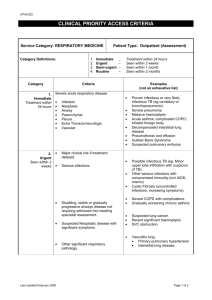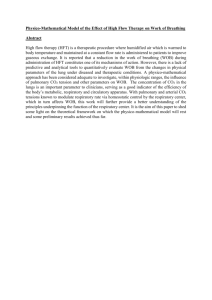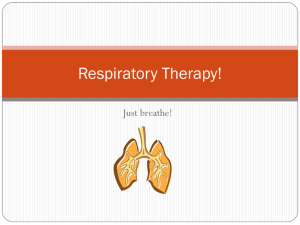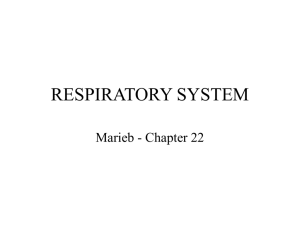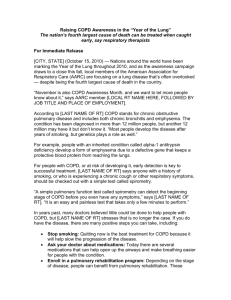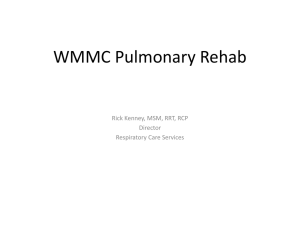File
advertisement
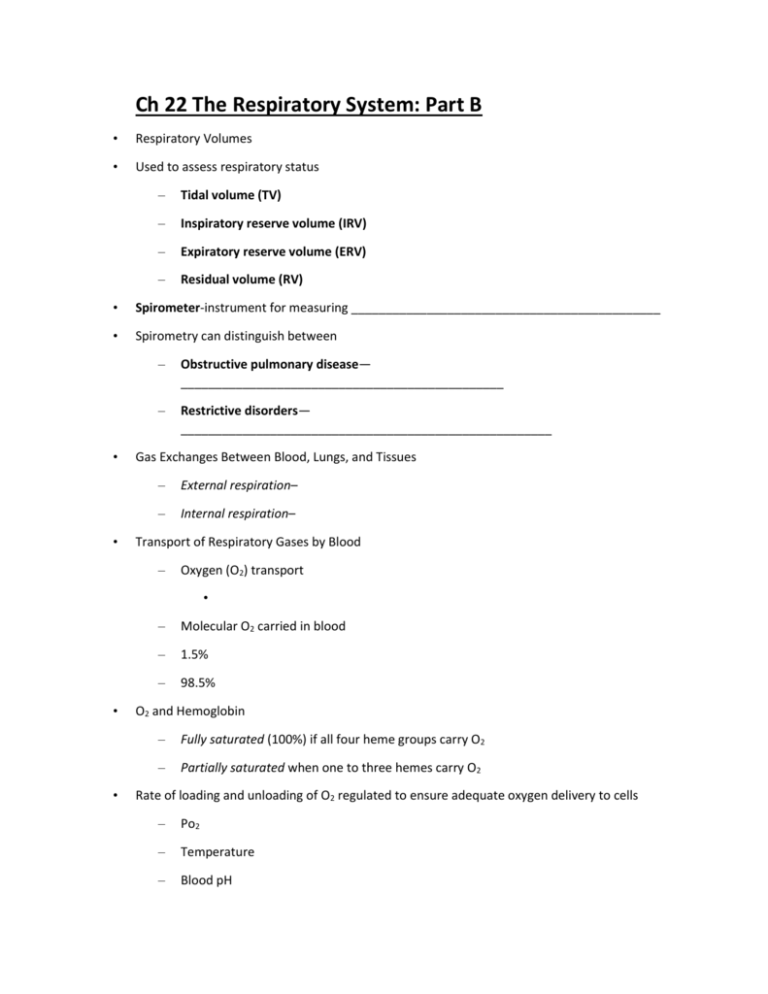
Ch 22 The Respiratory System: Part B • Respiratory Volumes • Used to assess respiratory status – Tidal volume (TV) – Inspiratory reserve volume (IRV) – Expiratory reserve volume (ERV) – Residual volume (RV) • Spirometer-instrument for measuring _____________________________________________ • Spirometry can distinguish between • • – Obstructive pulmonary disease— _______________________________________________ – Restrictive disorders— ______________________________________________________ Gas Exchanges Between Blood, Lungs, and Tissues – External respiration– – Internal respiration– Transport of Respiratory Gases by Blood – Oxygen (O2) transport • • • – Molecular O2 carried in blood – 1.5% – 98.5% O2 and Hemoglobin – Fully saturated (100%) if all four heme groups carry O2 – Partially saturated when one to three hemes carry O2 Rate of loading and unloading of O2 regulated to ensure adequate oxygen delivery to cells – Po2 – Temperature – Blood pH – Pco2 – Concentration of BPG–produced by RBCs during glycolysis; levels rise when oxygen levels chronically low • Homeostatic Imbalance • Hypoxia – • CO2 Transport • CO2 transported in blood in three forms – 7 to 10% dissolved ______________________ – 20% bound to ____________________________________ – 70% transported as ________________________________ • Transport and Exchange of CO2 • CO2 combines with water to form carbonic acid (H2CO3), which quickly dissociates • • Factors influencing Breathing Rate and Depth – • Occurs primarily in RBCs, where carbonic anhydrase reversibly and rapidly catalyzes reaction Both modified in response to changing body demands • Most important are changing levels of CO2, O2, and H+ • Sensed by central and peripheral chemoreceptors Depth and Rate of Breathing – Hyperventilation- – decreased blood CO2 levels (hypocapnia) • cerebral vasoconstriction and cerebral ischemia dizziness, fainting • Apnea– • Pulmonary Irritant Reflexes – • Respiratory Adjustments: High Altitude – Quick travel to altitudes above 2400 meters (8000 feet) may symptoms of acute mountain sickness (AMS) – Symptoms: • Acclimatization-respiratory and hematopoietic adjustments to long-term move to high altitude – • Chronic obstructive pulmonary disease (COPD) • – Other common features – • Emphysema – • Chronic bronchitis • • COPD symptoms and treatment – • Asthma–reversible COPD – • Tuberculosis (TB) – • Lung cancer – – • Three most common types • Adenocarcinoma • Squamous cell carcinoma • Small cell carcinoma Lung cancer Detection – • Potential new therapies for lung cancer – • Cystic fibrosis

